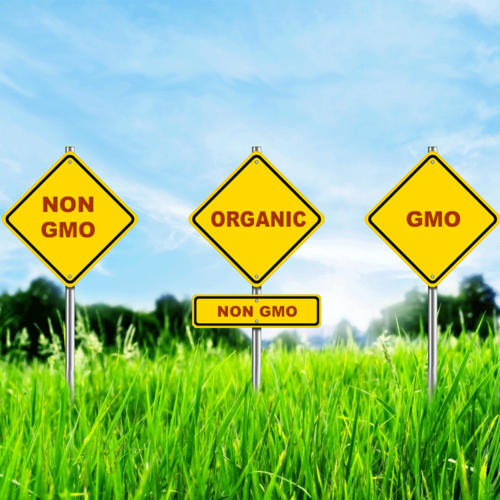

Organic vs Non-GMO

When we go to the grocery store, we want to make healthy choices for ourselves and our babies. But labels can be confusing and might not always mean what we think they do. Here are some terms you've probably heard or seen, and what they really mean.

Organic
Organic farming practices are designed to encourage soil and water conservation, reduce pollution and preserve animal welfare. USDA certified organic foods are grown and processed according to strict federal guidelines addressing soil quality, animal-raising practices, pest and weed control, and use of additives, among many factors. Products must be at least 95% organic to use the USDA organic seal. Packaged products that contain at least 70% organic ingredients may say "Made with organic ingredients" on the label. Foods with less than 70% organic ingredients may not use the word "organic" on the product label, though the organic items can be included in the ingredient list.
All USDA certified organic produce, grains, meats, and processed foods do not allow the use of GMOs.
GMO's
Genetically modified organisms (GMOs) are any organisms whose DNA has been changed by scientists. The Colorado State University Extension Office calls "genetically modified" an imprecise and potentially confusing term, because virtually everything we eat has been modified genetically through domestication and many generations of selection for desirable traits. But in the debate about GMOs, the term typically refers to those organisms that have been altered using recombinant DNA technology in a laboratory, a practice that began in the mid 90s.
According to LiveScience.com, "By far the biggest use of GMO technology has been in large-scale agricultural crops: At least 90% of the soy, cotton, canola, corn, and sugar beets sold in the U.S. have been genetically engineered."
Most of these crops have been altered to improve pest resistance, but GMO crops also can be engineered for disease resistance , drought tolerance, added nutrients, flavor, temperature resistance, and more.
WebMD reports that up to 80% of processed foods in the U.S. are made with GMOs, so unless you eat only fresh unprocessed foods that are marked as non-GMO or certified organic, you are probably eating genetically modified food.

NON GMO Project Verified
The Non-GMO Project is a non-profit organization that independently offers GMO test verification and labeling for non-GMO products. Their verification is process-based, using traceability, segregation, and testing to ensure compliance with their standards.
Companies looking to receive the Non-GMO Project stamp must follow the project’s standards of best practices and have product testing conducted at various stages of production, anywhere from the field to the packaging facility.
Despite their inspection process, the project can’t legally claim products to be “GMO free” because the contamination risks to seeds, crops, and ingredients are too high. However, they’re the only organization offering independent verification of testing for GMO products in the US and Canada.
What does the Non-GMO Project’s Verification Process require?
- Requires ongoing testing of all at-risk ingredients - any ingredient that is grown commercially in GMO form must be tested prior to use in a verified product.
- They use an Action Threshold of 0.9%. This is in alignment with laws in the European Union, where any product containing more than 0.9% GMO must be labeled.
- Absence of all GMOs is the target for all Non-GMO Project Standard compliant products. Continuous improvement towards achieving this goal must be part of the Participant’s quality management systems.
- After the test, they require rigorous traceability and segregation practices to be followed in order to ensure ingredient integrity through to the finished product.
- For low-risk ingredients, they conduct a review of ingredient specification sheets to determine absence of GMO risk.
- Verification is maintained through an annual audit, along with onsite inspections for high-risk products.
